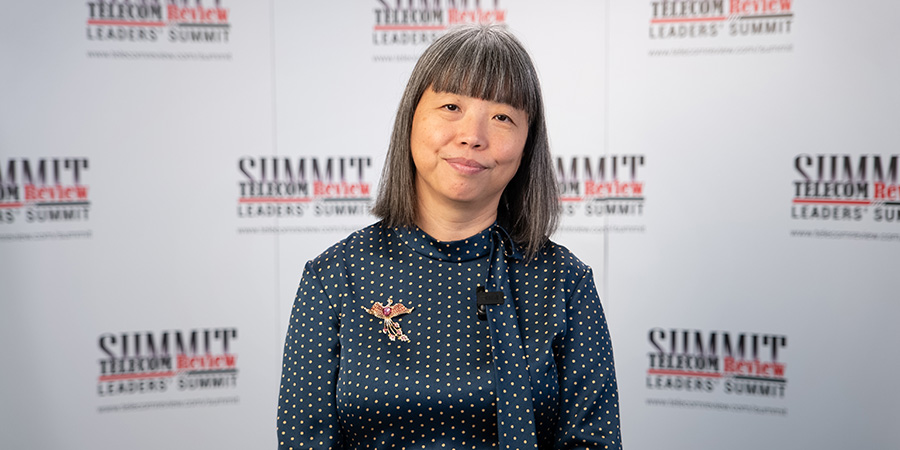In an exclusive interview during the 17th edition of the Telecom Review Leaders’ Summit, May Li, Huawei Middle East & Central Asia Carrier Business Group, Solution and Marketing VP, shared some of Huawei’s innovative operations around 5G, 5.5G and AI in the GCC markets.
Can you give us a brief update of 5G development in the Middle East?
5G development in the region has been around for 4 years now since the first commercial deployment in 2019. So, all the GCC operators have already deployed 5G with around 26 million users in total. About 10% of these users are on the 5G home broadband, which in technical terms is fixed wireless access (FWA).
Many countries have made quite a rapid development around FWA network users and are planning to introduce faster speeds, for example, 300 mbps to guarantee next generation package offerings. 5G cell phones made good progress in the B2C market as well as in B2B with over 60,000 5G private line subscribers.
In addition, there have been some 5G deployments to support smart oil and gas and smart ports use cases. We believe, in the coming years as operators, we will continue to develop and spend on 5G user bases and also deploy smart use cases in the different industrial sectors using 5G technologies.
5.5G seems to be a hot topic, how will 5.5G benefit consumers and businesses compared to 5G?
Certainly, 5.5G is quite an important topic, especially in the GCC region. The UAE’s TDRA, together with operators e& and du, has verified the second phase of 5.5G or 5G Advanced. Subsequently, Zain KSA, in collaboration with Huawei, advanced their 5G-Advanced network through the '5.5G City Innovation Project.' Furthermore, operators across GCC countries have outlined their 5.5G visions, particularly focusing on the concept of 10 Giga cities, a key characteristic of 5.5G.
Also, trials are being conducted to test some of the key features of 5.5G such as reduce capability (RedCap) IoT and a future passive IoT capability. In terms of the benefits that 5.5G will bring to consumers and businesses, significant distinctions emerge in terms of the experiences and digital use cases applicable across different sectors. Specifically, for consumers, we anticipate a broader availability and adoption of Naked Eyes 3D devices.
We see the potential uptake of 5.5G for connected cars with these devices likely to cross 500 million worldwide by 2025. In the UAE, there is particular interest in AI for unmanned, autonomous driving cars. We also look at 5.5G to help developers automate manufacturing process and implant digital solutions in the oil and gas sectors and also support different all-scenario IoT to help smart logistics and smart transport.
There’s a big global focus on AI currently. Can you explain how AI technology will benefit telco operators? What are Huawei’s capabilities in AI development?
As you may know, Huawei recently launched the Cloud Pangu Model. The newly launched Pangu Model 3.0 uses a "5+N+X" three-layer architecture. The L0 layer consists of five foundation models— natural language processing (NLP), CV, multimodal, prediction, and scientific computing, which provide general skills to power an endless possibility of industry-specific applications.
The L1 layer consists of N industry-tailored models. Huawei Cloud can provide customers with industry models it has trained on open industry datasets, including Pangu models for telcos, government, finance, manufacturing, mining, and meteorology.
The L2 layer provides pre-trained models for specific industry scenarios and tasks, such as intelligent government hotlines, intelligent branch assistants, lead compound screenings, conveyor belt foreign object detections, and typhoon trajectory predictions. Working together with the operators, we are continuing to look at how the AI models can help operators to improve productivity and efficiency in various industries and also help in enterprise and management applications such as internal collaboration, recruitment processing, and generative content and so on. From the second model approach, we will look at how we can help with services and operations to make business development much more agile and efficient.
Regarding the third part, we will look at how operators can work with technology providers, such as Huawei, to support futuristic AI based services at industrial levels; jointly developing industry-specific or advanced models to support the industry’s own productivity and efficiency.










